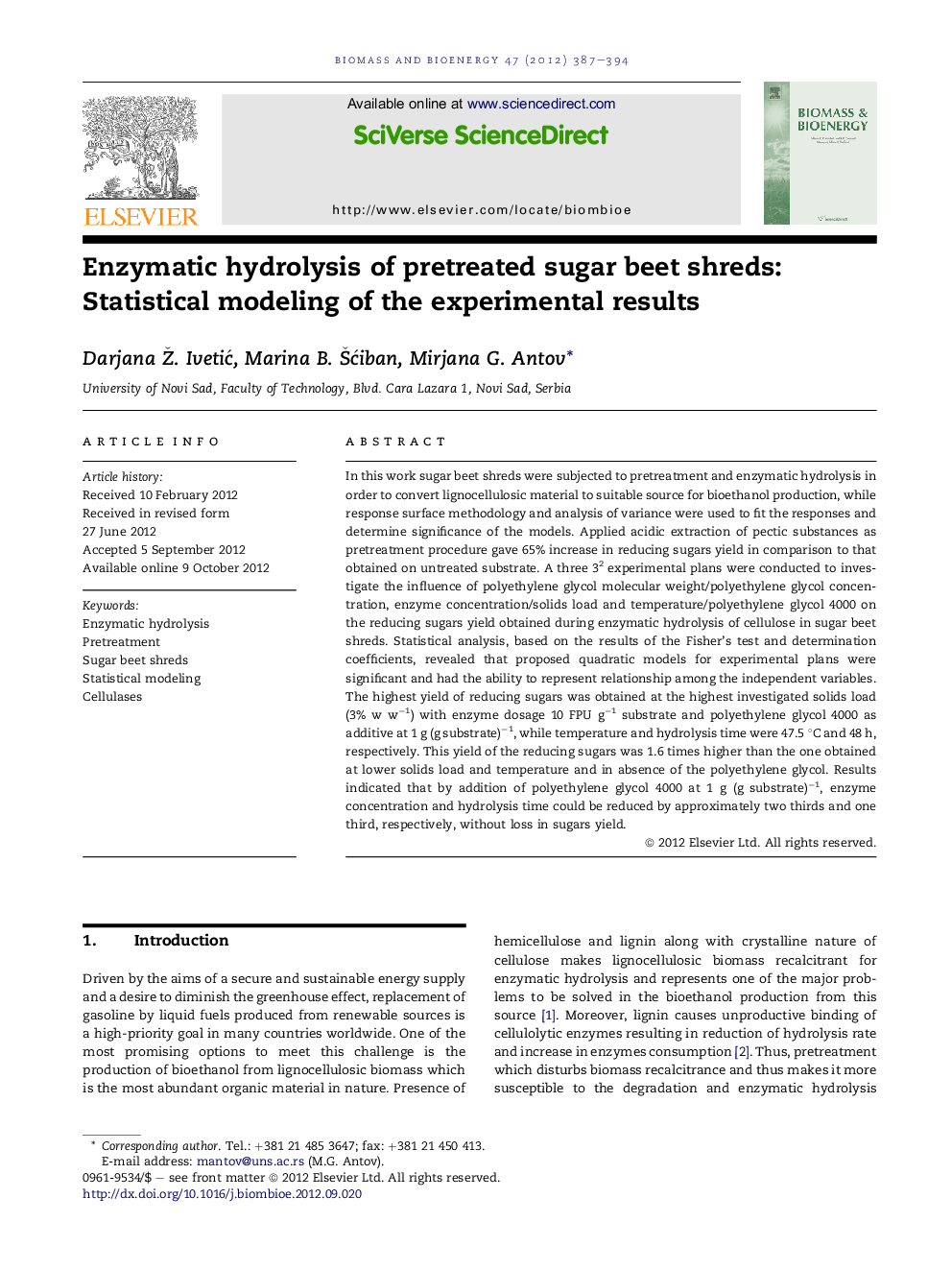| Article ID | Journal | Published Year | Pages | File Type |
|---|---|---|---|---|
| 677294 | Biomass and Bioenergy | 2012 | 8 Pages |
In this work sugar beet shreds were subjected to pretreatment and enzymatic hydrolysis in order to convert lignocellulosic material to suitable source for bioethanol production, while response surface methodology and analysis of variance were used to fit the responses and determine significance of the models. Applied acidic extraction of pectic substances as pretreatment procedure gave 65% increase in reducing sugars yield in comparison to that obtained on untreated substrate. A three 32 experimental plans were conducted to investigate the influence of polyethylene glycol molecular weight/polyethylene glycol concentration, enzyme concentration/solids load and temperature/polyethylene glycol 4000 on the reducing sugars yield obtained during enzymatic hydrolysis of cellulose in sugar beet shreds. Statistical analysis, based on the results of the Fisher's test and determination coefficients, revealed that proposed quadratic models for experimental plans were significant and had the ability to represent relationship among the independent variables. The highest yield of reducing sugars was obtained at the highest investigated solids load (3% w w−1) with enzyme dosage 10 FPU g−1 substrate and polyethylene glycol 4000 as additive at 1 g (g substrate)−1, while temperature and hydrolysis time were 47.5 °C and 48 h, respectively. This yield of the reducing sugars was 1.6 times higher than the one obtained at lower solids load and temperature and in absence of the polyethylene glycol. Results indicated that by addition of polyethylene glycol 4000 at 1 g (g substrate)−1, enzyme concentration and hydrolysis time could be reduced by approximately two thirds and one third, respectively, without loss in sugars yield.
► Acidic pretreatment of sugar beet shreds provided increase in hydrolysis yield. ► Models obtained for reducing sugars yield were statistically significant. ► PEG addition could reduce enzyme consumption and hydrolysis time without yield loss. ► Statistical analysis of enzymatic hydrolysis and PEG provided 1.6-fold higher yield.
